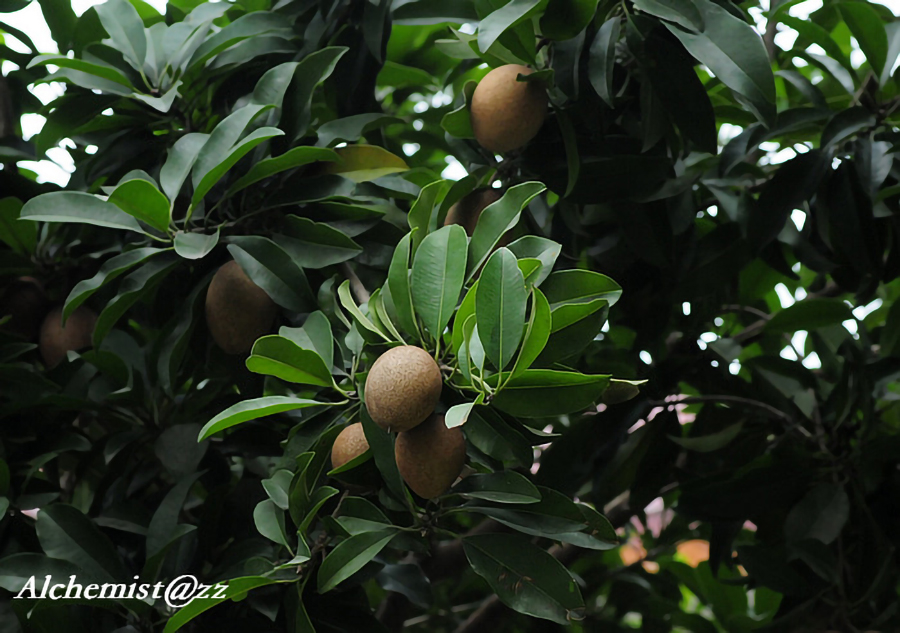- Scientific Name: Manilkara zapota (L.) P.Royen
- Ref: Blumea 7: 410, 1953.
- English Common Name: sapodilla
- Chinese Common Name: 人心果 rénxīnguǒ
- Family: Sapotaceae
- Genus: Manilkara
- Distribution: native to the Atlantic and Pacific coasts of Belize, Guatemala, Mexico, and Nicaragua, and is widely cultivated elsewhere.
Trees, to 18 m. Leaves: petiole 10-30 mm; blade elliptic to oblong-elliptic, 60-140 × 20-50 mm, base cuneate to attenuate, margins sinuate, apex acute to acuminate (often folded on pressed specimens), surfaces brown-tomentose along midrib or glabrous abaxially, glabrous adaxially. Inflorescences solitary flowers. Pedicels 10-20 mm, rufous-tomentose Flowers: sepals ovate to lanceolate, 7-10 mm, apex acute to obtuse, tomentose; petals white, unlobed or irregularly 2-3-lobed, margins entire to irregularly 3-dentate apically, glabrous or sparsely hairy, corolla 7-11 mm, tube 4-6(-7) mm (equaling or exceeding lobes); staminodes petaloid; ovary hairy. Berries ellipsoid or depressed-globose to subglobose, 35-80 mm, surface roughened, scaly; pedicels slightly enlarged distally. Seeds 2-10, 15-25 mm. 2n = 26. (FNA)
